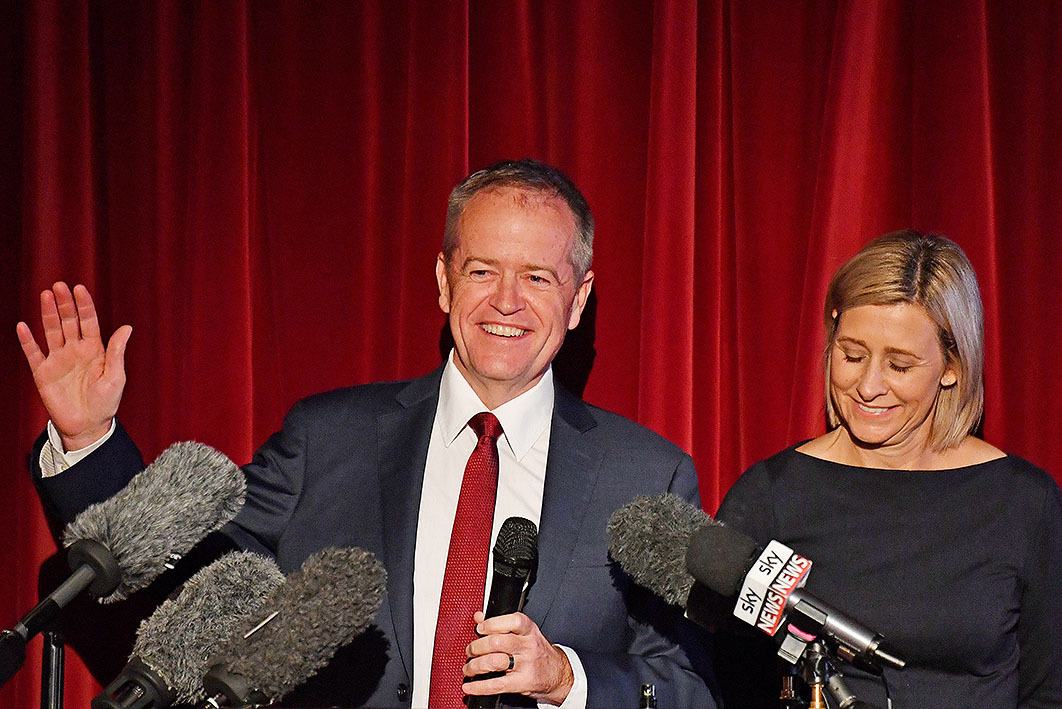Way back in December 1982, when a Labor opposition only managed a 2.3 per cent swing at a by-election in the Victorian seat of Flinders, the disappointing result made a big contribution to the eventual replacement of leader Bill Hayden with Bob Hawke. Yes, Labor was way ahead of the recession-worn Fraser government in national opinion polls, but if they could only manage a small shift at a by-election — and by-elections usually saw larger swings — most of caucus began to doubt that Hayden had what it would take to wrest power from Malcolm Fraser.
Yesterday’s shifts of 0.5 per cent in Braddon and 4.6 per cent in Longman, both of which may shrink a little after the rest of the postal votes are counted, averaged around the same swing as in Flinders. Yet they are being hailed as feats of splendour and magnificence on the part of the current Bill.
This largely reflects the unrealistic expectations generated by the published single-seat polls, which on the whole proved every bit as unreliable as they usually do. In both electorates they hovered around 50–50 after preferences, leaning towards Labor a little in Braddon and the Liberal National Party a touch in Longman. “Leaked” alleged internal polling from both sides sang from the same sheet.
All of which the media–commentator–political class internalised and amplified, with the betting markets, those dutiful dawdling distillers of general expectations, following suit.
In two-party-preferred terms, the pollsters performed respectably in Braddon (the final Newspoll had Labor’s Justine Keay on 51 per cent; at last count she’s on 52.4) but vastly understated the vote for independent Craig Garland and so overstated support for both major-party candidates.
In Longman, by contrast, the polling was pretty shocking in two-party-preferred terms (Labor’s Susan Lamb is currently on 55.4). The largest component was a big overstating of the primary vote for the Coalition’s Trevor Ruthenberg. That 10 per cent collapse in LNP support, to around 29 per cent, is a headline-grabber.
Centre Alliance’s Rebekha Sharkie’s big victory in Mayo was a surprise to no one — and that’s also wholly because of the published surveys, which had her in the high 50s or low 60s after preferences from the outset. When numbers are so one-sided there’s less pressure on the pollsters to get it exactly right, but in fact the final Newspoll did very well, especially on the main contenders’ primary votes and two-candidate-preferred votes.
And in the two Western Australian contests, the forgotten pair of Perth and Fremantle, Labor romped home as expected against the Greens.
Back in Braddon and Longman, Labor could have expected to benefit from “sophomore surge” (both sitting MPs were freshly elected in 2016 and are likely to have generated new personal votes) as well as the usual swing against the government. The unexceptional results — on the low side of swings to oppositions — were made to look exceptional by the opinion polling, which allowed the media and party insiders to whip themselves into a lather of expectation that the Coalition would probably take one, maybe both. And what would that mean for Shorten’s leadership?
Against these anticipations, the opposition leader looks like a miracle maker and a vote magnet. And from around 7.30pm eastern standard time on Saturday it was apparent to all that Labor had run two very fine, well-oiled campaigns indeed, particularly in Queensland.
In reality Shorten remains a less-than-popular opposition leader. As in Bennelong last December, he insisted on inserting himself into both contests, presumably aware this would suppress his candidates’ support but also knowing that to do otherwise would have generated unhelpful commentary. And this time the gamble paid off: he can now claim ownership of both results.
As usual with by-elections, it was all a huge fuss about close to nothing. It is always erroneous to view these contests as “dry runs” for a general election, because people aren’t voting on who they want to form government. So these results tell us very little about the next election (at which, it remains my humble opinion, Labor is likely to win overall, though the Coalition will probably take back Longman).
But while the Braddon and Longman votes tell us little, they’re producing much colour and movement inside the political bubble. The chance of Shorten being toppled before the next election has receded further, which is actually a good outcome for the government. And Malcolm Turnbull can expect an uncomfortable time.
Had the polls been accurate indicators of the outcomes from the outset, we would have adjusted our expectations accordingly. And had polls erred the other way, pointing to huge swings to Labor, questions would now be directed at Shorten.
Tony Abbott largely bit his tongue during the final weeks of the campaign but might now be on hand to provide constructive criticism, contrasting Saturday’s numbers with the one by-election under his prime ministership, Griffith in 2014, which saw a small pro-government swing.
Anyway, this government will now be at the receiving end of the “learn the lessons” mantra. And, as always, it isn’t exactly clear what those lessons should be. •





